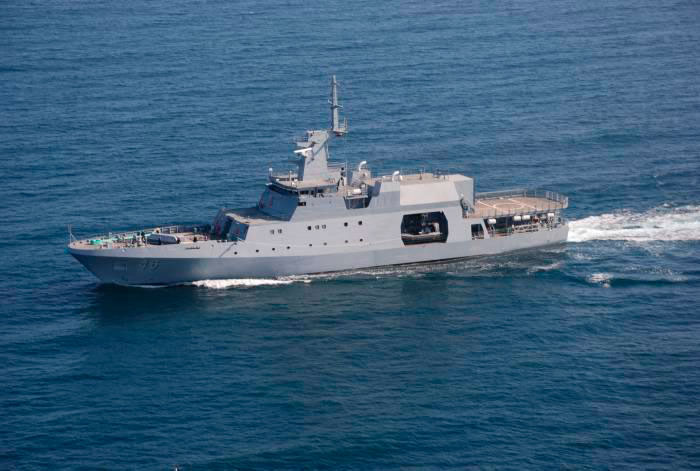Both the Charles Upham and Protector project were done on the cheap as budget by the respective governments. The RNZN didn't want to to touch either with 40ft barge poles. Indeed the Ocean Protector replacement may be a contender.The Arafuras are designed to regularly operate as far as 50 South - they are not intended merely for ops in tropical waters. They are not, however, intended to operate in ice. They could almost certainly operate to the ice in summer, but it’s not something that you would want to do as your normal conops. As others have noted, there are much better designs of an appropriate size to do that; so why would you compromise on a likely less successful solution.
Oh, I forgot it’s NZ, so given Charles Upham and to a lesser extent the Protector group maybe…. (Sorry Kiwis ….. but this discussion belongs in your thread, not ours)
Note however that in the Australian context, the Ocean Protector replacement may well fit in this space.
I would not want to take the Arafura class below 50°S because they are not built for the Southern Ocean. Unlike the Columbians, both NZ & Australia don't have the luxury of a continental landmass close by for most of the voyage with a short crossing to the Antarctic Peninsula. We have a good 2,000 nm of open ocean to cross with nowhere to run when it gets real rough.Its not just hull strength. A journey further than 50s would likely require additional endurance and range. Extensive deck and fitting heating etc. Most of the time these ships will never be cutting through any sea ice at all, its the other aspects that are probably more important than the ability to break ice of significant thickness. While in the north there tends to be a wide variety of ice thickness, it is less so in the south. year ice, will be broken by a ice breaker in the first part of summer. Then basically any ship can pull up at the coast in summer. No one goes through in winter. Icebreakers have been trapped in glacial calving events at any time of the year.
The Arafuras could make a visit like the Colombians did in 2015 with their OPV. It is based off a Fassmer 80.
Due to Antarctica remoteness and harshness, oceanic conditions, you tend to want larger, more powerful more capable ships with greater range and endurance with very different needs.
The Southern Ocean wave climate is different to the North Atlantic wave climate and ongoing research is showing that. It's been found that the significant wave height is approximately 4 metres higher and the mean wave periods about 4 - 6 seconds longer than those in the North Atlantic. I do have a copy of the DTA paper about the Southern Ocean wave climate but I will not be posting a link to it here because I don't have permission to.
The fetch in the Southern Ocean is basically unlimited and at any given time there are five low pressure systems - storms spinning off the Antarctic continent into the Southern Ocean. So you have these five low pressure systems circling across the bottom of the world as they make their way north. This is basic NZ and Australian climatological knowledge taught in first year Uni atmospheric science courses.
Up until now Lloyd's of London and other maritime organisations have been using the North Atlantic classification system to certify ships for the Southern Ocean, but the NZDF DTA have found this to be somewhat inaccurate and are proposing a Southern Ocean Classification System to the appropriate Classification Authorities.
The VARD 9-203 is thought to be the preferred option at the moment and IIRC the budget is around NZ$600 million.The Vard 9 209 has been mentioned a couple of times in the RNZN thread as well. This vessel has been built by Chile for duties in the Southern Ocean is 109 metres
edit that should read Vard 9 203.
BTW @spoz is right this is a RNZN topic.

